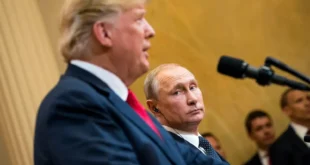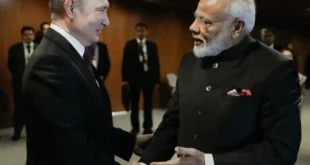Giancarlo Elia Valori
“Operation Martyr Soleimani” began on the night of January 8. The leader of the Pasdaran Al Quds Brigade had died on the night of January 3.
Some Iranian missiles hit two Iraqi bases, Ayan al-Asad and Erbil, in the Kurdish region. In Erbil there were also Italian troops, who hid in a bunker.
The Kurds are targets for Iran since they are allies of the United States and – at least initially – enemies of Assad’s regime.
Iranian sources reported a number of U.S. victims of at least 80 people, a toll denied – at first – by the United States and later by the Iranian Foreign Minister, Mohammed Javad Zarif, who subsequently stated that the Iranian Government did not know the number of enemy’s victims.
Indeed – as an important sign of psywar – Minister Zarif himself said he did not know what nationality the victims of the Iranian missile attack were.
The attack was carried out after midnight so as to replicate the time and ways of Qasem Soleimani’s targeted assassination – an essential theme in the Shiite war theory.
Iran, however, launched at least twelve short-to-medium range ballistic missiles against groups of US soldiers, according to the rule of Qisas, i.e. “life for life”, which follows verse 178-179 of the Sura Al-Baqarah: “the free for the free, the slave for the slave, and the female for the female”. This means blood for blood, possibly in the same way and form as the first offense.
According to the Iranian leaders, the missile attack is a “measure proportionate” to the U.S. action against Soleimani. Hence, again according to them, Operation “Martyr Soleimani” is expected to be concluded today but, not by chance, for other sources from the Islamic Revolutionary Guard Corps, the so-calledPasdaran, there are still as many as 104 possible targets in the United States, Europe and the Sunni countries.
Hence targets in the United States and in the territories of the U.S. European allies that are under the Iranian scrutiny and can be hit at any time.
Therefore, it is the probable beginning of an asymmetric war between Iran and the United States, which will polarize much of the Middle East and will become increasingly uncontrollable as the current U.S. demilitarization of the Greater Middle East proceeds.
Furthermore, this operation designed to avenge Qasem Soleimani’s targeted assassination – according to the principle of Qisas – entailed the use of only a small part of the Iranian missile apparata. In Iran’s mind, this implies triggering a response against increasingly virulent and ever less proportionate U.S. attacks.
If the U.S. attacks are progressive and significant, Iran will have a base of popular support throughout the Middle East, from which – at that time – the United States will be out. Hence there will possibly be a real regional war between Iran and U.S. Arab and Jewish allies, i.e. the dream of Ayatollah Khomeini who saw the final clash between the “two Satans” and “sacred” Iran.
Furthermore, after the missile attack, Imam Khamenei spoke of a “slap on the face” for the United States, considering that the primary aim – despite President Trump’s temptations to walk out – is to force the United States to a quickly and complete withdrawal from the whole Middle East region. Currently, however, there are 5,000 U.S. soldiers in Iraq, in addition to further 10,000 on the way.
Now, in the likely prospect of an open clash between the United States and Shiite Iran, there are some technical-military factors to be considered.
The United States can annihilate the Iranian Navy and Air Force within 48 hours.
A real all-out conflict is no good to either of the two strategic players. The United States would certainly hit primary targets within the Iranian territory, thus causing incalculable damage, but it is certain that also the U.S. soldiers would have great difficulty in penetrating the Iranian territory, with rapidly unsustainable losses.
It is obvious that this policy of attrition between Iran and the United States has a worldwide geopolitical value.
The U.S. primary interest is to defuse Iran as a regional player and fully weaken the “Shiite crescent” between Iran, Yemen, the Lebanon and Syria, thus directly favouring the Sunni countries, which are not necessarily more pro-USA than the others.
Obviously in the U.S. strategists’ minds, hitting Iran also means hitting the Russian Federation and the People’s Republic of China, for which Iran is the most reliable and important ally in the Middle East, not to mention Iranian oil transfers to China or military cooperation between Iran and Russia.
The beginning of this new configuration of the confrontation between the pro-American and the pro-Russian and pro-Chinese blocs can be seen in Iran’s reaction to the U.S. withdrawal from the JCPOA in 2019.
Conversely the EU did not react at all to President Trump’s new sequence of sanctions against Iran, imposed after the U.S. withdrawal from the JCPOA, the Iranian nuclear agreement in which also the EU participated.
The EU is the so-called “stone guest” of any agreement.
The new U.S. sanctions hit Iran by reducing oil exports by at least 300,000 barrels/day, with a series of trade restrictions that are particularly damaging to the EU. However, as often happens to teenagers, Europe’s childish love for the United States is such as to tolerate any offense.
Iran decided to respond to this new geopolitical and economic order with a de facto alliance with Russia and China, but without direct military implications, as well as with a calculated tension with the Sunni petro-monarchies.
Allegedly the current reserves of the Iranian Central Bank amount to 110 billion US dollars, of which just over 50% “cash”.
This allows at least two years of State-funded imports and this is the time horizon in which the Iranian strategic and military operations must be considered.
Another variable that Iran is waiting to calculate is 2020, the year of the U.S. presidential elections.
The ability to destabilize the Middle East – the real factor on which Iran can count in the clash with the United States – is Iran’s real asset.
The network of proxies to systematically harm Israel, such as Hamas (the network of the Muslim Brotherhood, currently in Iran’s pay), Hezbollah, the Shiite organization created on Ayatollah Khomeini’s direct orders, and finally the Islamic Jihad, another Sunni organization now shifted under Iran’s umbrella.
Hence a strategy of irony, which has dissimulation as its original meaning.
Also cyberwarfare must be considered: the first Iranian cyberattack against the United States was against a U.S. government website, just the day after Soleimani’s death.
Later the Iranian cyberattacks hit the Federal Depository Library Programwebsite, as well as other targets.
In an all-out attack on the United States, certainly Iran will operate at first with cyberwarfare.
The potential of Iran’s new cyberwarfare probably began in 2010, with the discovery of Stuxnet.
In all likelihood, it was an attack of Israeli origin, since the Stuxnet computer virus came from there.
That was the time when Iran really brought itself up to date in cyberwarfare.
From that moment on, the Iranian Shamoon viruses appeared, which in 2017 severely infected the computer network of the Aramco refineries in Saudi Arabia. Later, in November 2019, Iran knocked out the personal and corporate networks of some Saudi Aramco’s operators.
Hence Iran has developed a specific cyber-ability to hit critical infrastructure, financial institutions, major manufacturing companies and universities.
Iran can also change-forge air and maritime GPS.
In the hierarchy of States capable of launching cyberattacks, the United States, Russia and China rank first, followed by Iran and North Korea.
With specific reference to proxies’ war, however, Iran has two major strongholds: the Lebanon, with Hezbollah’s fragmented power, and Syria.
Nevertheless, another future area of tension between Iran and its Sunni or Western enemies will be the Strait of Hormuz. Probably the Iranian Armed Forces’ future attacks in that area will take place simultaneously with cyberattacks.
Russia, however, does not want any clash – even indirect – between the United States and Iran.
Furthermore, for Saudi Arabia, Soleimani’s assassination is obviously good news, albeit with some “ifs”.
Meanwhile a conflict – even an indirect one – between Iran and the United States could block the great G20 Meeting scheduled in Riyadh for late 2020.
Furthermore, in case of a war between Iran and the United States, the Saudi Defence would be obliged to use many of the resources otherwise devoted to the Vision 2030 project, which is number one in Mohammed bin Salman’s mind.
Finally, the financial insecurities already triggered by Soleimani’s assassination could harshly hit both the national and international interests of Saudi Arabia.
As can be easily imagined, so far insecurity has led to a sharp increase in insurance premiums for all oil and gas transfers. This refers to a total value of transported oil and gas of at least 1.2 trillion US dollars.
It should be noted, however, that 80% of all Gulf States’ GDP depends on oil.
Nevertheless, oil and gas account for only 30% of Iran’s GDP.
Saudi Arabia exports approximately 6.5 million barrels/day, which leave from the ports of Ras Tamura and Ju’aymah and from King Fahd Industrial Port in Jubail.
All targets which can be easily reached by Iranian operations.
Iraq, the second largest exporter in the Middle East and Italy’s second or sometimes first supplier, exports 3.8 million barrels/day, accounting for 90% of Iraq’s public revenue.
It exports through Basra and the Kawr Al’Amiya terminals. Once again, it is extremely easy to hit these targets from the Iranian bases.
Bypassing the above mentioned ports, Saudi Arabia’s, Iraq’s and other minor producers’ alternative options can be the Rabigh terminals, on the east coast of the Red Sea, or the Kirkuk-Ceyhan pipeline.
Hence this will be the general framework of a probable military conflict between Iran and the United States, although certainly not planned by Iran.
GIANCARLO ELIA VALORI
Honorable de l’Académie des Sciences de l’Institut de France
President of International World Group
January 2020
 Geostrategic Media Political Commentary, Analysis, Security, Defense
Geostrategic Media Political Commentary, Analysis, Security, Defense





